Ba9.7
The forces of life were like ebb and tide,
... He was moreover confronted with
identifications which no European, that is, no average rational
European, could admit. He felt himself humiliated, though not
disagreeably so, at finding that his informant regarded fire and
water as complementary, and not as opposites. The rays of light
and heat draw the water up, and also cause it to descend again
in the form of rain. That is all to the good. The movement
created by this coming and going is a good thing. By means of
the rays the Nummo draws out, and gives back the life-force.
This movement indeed makes life. The old man realized that he
was now at a critical point. If the Nazarene did not understand
this business of coming and going, he would not understand
anything else. He wanted to say that what made life was not so
much force as the movement of forces. He reverted to the idea of
a universal shuttle service. 'The rays drink up the little
waters of the earth, the shallow pools, making them rise, and
then descend again in rain.' Then, leaving aside the question of
water, he summed up his argument: 'To draw up and then return
what one had drawn - that is the life of the world' ...
where Canopus (*95, α Carinae)
could be said to represent the 'ebb' ('land'). And 6 days later Sirius (*101
= *56 + * 45) - i.e. presumably an aspect
of the Fisher of Kings (Halcyon →
Alcyone) - would then deliver the missing waters (the
'sea').
... Implored by the gods to fill the sea again,
the Holy One replied: 'That water in sooth hath been digested by
me. Some other expedient, therefore, must be thought of by you,
if ye desire to make endeavour to fill the ocean ...

... Eridhu, or Eri-duga, the Holy City,
Nunki, or Nunpe, one of the oldest cities in the world, even in
ancient Babylonia, was that kingdom's flourishing port on the
Persian Gulf, but, by the encroachment of the delta, its site is
now one hundred miles inland. In its vicinity the Babylonians
located their sacred Tree of Life ...
... This [η
Carinae, *162, at the opposite side of the Keel compared to
Canopus] is one of the most noted objects in the heavens,
perhaps even so in almost prehistoric times, for Babylonian
inscriptions seem to refer to a star noticeable from occasional
faintness in its light, that Jensen thinks was η.
And he claims it as one of the temple stars associated with Ea,
or Ia, of Eridhu, the Lord of Waters, otherwise known as Oannes,
the mysterious human fish and greatest god of the kingdom
...
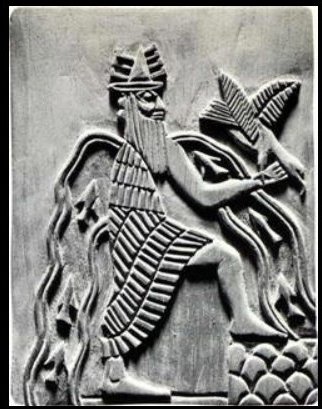
... Berōssōs described Oannes as the teacher
of early man in all knowledge; and in mythology he was even the
creator of man and the father of Tammuz and Ishtar, themselves
associated with other stars and sky figures. Jensen thinks
Oannes connected with the stars of Capricorn; Lockyer finds his
counterpart in the god Chnemu of Southern Egypt; and some have
regarded him as the prototype of Noah ...

The missing tidal waters ought to begin to return (hua) around
"April 11 (101 → Sirius).
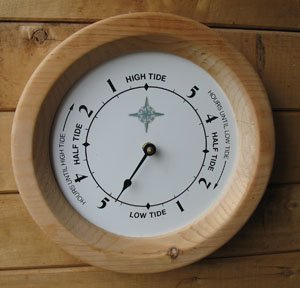
... The Sothic cycle was based on what is
referred to in technical jargon as 'the periodic return of the
heliacal rising of Sirius', which is the first appearance of
this star after a seasonal absence, rising at dawn just ahead of
the sun in the eastern portion of the sky. In the case of Sirius
the interval between one such rising and the next amounts to
exactly 365.25 days - a mathematically harmonious figure,
uncomplicated by further decimal points, which is just twelve
minutes longer than the duration of the solar year ... In
ancient Egypt they thought Sirius was behind the yearly rise of
the Nile ... the seasonal cycle, throughout the ancient world,
was the foremost sign of rebirth following death, and in Egypt
the chronometer of this cycle was the annual flooding of the
Nile ...
365 - 101 = 264 (→ 26 * 4 = 104 = 8
* 13). 101 + 104 = 365 - 160 (→
June 10).
... Midsummer is the flowering season of the oak, which is the
tree of endurance and triumph, and like the ash is said to
'court the lightning flash'. Its roots are believed to extend as
deep underground as its branches rise in the air - Virgil
mentions this - which makes it emblematic of a god whose law
runs both in Heaven and in the Underworld ... The month, which
takes its name from Juppiter the oak-god, begins on June 10th
and ends of July 7th. Midway comes St. John's Day, June 24th,
the day on which the oak-king was sacrificially burned alive.
The Celtic year was divided into two halves with the second half
beginning in July, apparently after a seven-day wake, or funeral
feast, in the oak-king's honour ...
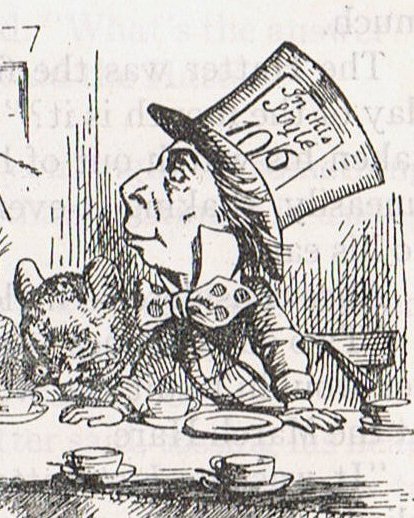
Although Ba9-7 could indicate a come back already
6 days after the 'kitchen-fires' (ahi) in Ba9-1.
 |
 |
|
hua |
ALCYONE |
... In China, every year about the beginning
of April, certain officials called Sz'hüen used of old to
go about the country armed with wooden clappers. Their business
was to summon the people and command them to put out every fire.
This was the beginning of the season called Han-shih-tsieh,
or 'eating of cold food'. For three days all household fires
remained extinct as a preparation for the solemn renewal of the
fire, which took place on the fifth or sixth day after the
winter solstice [Sic!] ...
 |
 |
 |
 |
 |
 |
 |
|
Ba9-1 |
Ba9-2 |
(7 * 7 * 7) |
Ba9-4 (344) |
Ba9-5 |
Ba9-6 |
Ba9-7 |
| ki te ahi |
kua rere ki te ragi |
kua hati ïa i to toa - i rapue |
ko te tagata kua haga |
ki te mea ke |
kua hakatega koia |
ki mua o te tagata - hua ia |
|
Hati 1.
To break (v.t., v.i.); figuratively: he hati te pou
oka, to die, of a hopu manu in the exercise
of his office (en route from Motu Nui to
Orongo). 2. Closing word of certain songs. Vanaga.
Hahati. 1. To break (see hati). 2. Roughly
treated, broken (from physical exertion: ku hahati á
te hakari) 3. To take to the sea: he hahati te
vaka. Vanaga. Ha(ha)ti. To strike, to break,
to peel off bark; slip, cutting, breaking, flow, wave (aati,
ati, hahati); tai hati, breakers,
surf; tumu hatihati, weak in the legs;
hakahati, to persuade; hatipu, slate. P Pau.:
fati, to break. Mgv.: ati, hati, to
break, to smash. Mq.: fati, hati, id. Ta.:
fati, to rupture, to break, to conquer.
Churchill.
Rapu.
Pau.: fata-rarapu, to dissolve. Mgv.: rapu,
to dilute. Ta.: rapu, to mix. Mq.: ápu, to
draw water. Churchill. Ha.: Lapu 1. Ghost ...
apparition, phantom, specter; haunted; to haunt; to act
as a ghost. Ua lapu ke
keiki a kāua ia'u, I have been haunted by our child.
Ho'o lapu, to
pretend to be a ghost, as children on Hallowe'en. 2.
Haunted. Hale lapu,
haunted house, not the Halloween variety. Kiliki o
lapu, trick or treat.
Wehewehe. Waving (of leafy branches). The Eighth Island.
Aga. Work; to work, to make, to
build, to create: O te atua i-aga-ai i te ragi, i te
henua. God made heaven and earth. Vanaga. Agahuru
(hagahuru, hagauru). Agai (hagai).
Agatahi (aga-tahi) one, (hagatahi);
agatahi ahi atu, day before yesterday;
hagatahi ahi, yesterday. Churchill. Ao popohaga,
the hours between midnight and dawn. Vanaga.
Haga. 1. Bay, fishing spot.
(Figuratively) he haga o te ákuáku, it is the
[evil] spirit's fishing spot, i.e. a place where they
hide waiting for people to fall under their power. 2. To
want, to love. Ku haga á i te vai, I want water,
I am thirsty. Vanaga. 1. Bay, strait, anchorage, strand,
beach. P Mq.: hana, haka, small bay,
creek, cove. 2. Work, labor, employment, act, affair,
creation, design, state, maker, fashion, manufacture,
occupation, profession; to do, to make, to construct, to
employ, to form, to manufacture, to fashion, to found,
to be busy with; haga rakerake, crime; tagata
haga ei mea, mercenary; haga no iti, to plot
mischief; haga ke, to act contrary; haga
takataka, to disjoin; haga nui, difficulty,
fatigue, to weary; tuhi ki te haga, to give
employment; haga hakahou, to make over, to renew,
recovery; haga koroiti, to deal prudently;
haga nuinui ke, to overburden. P Pau.: haga,
to do, action, work, a deed. Mgv.: haga, aga,
work, labor. Mq.: hana, haka, action, act,
work, occupation. Ta.: haa, work, to labor, to
make. 3. Agreement, conduct, liking, intention, desire,
will; to resolve, to permit, to endeavor, to tolerate,
to be willing, to wish, to approve; haga ihoiho,
fixed desire; haga mai, haga no mai, to
agree, to hearken favorably; tae haga, despite,
involuntary, to refuse, to renounce; noho hakahaga,
apathy. 4. = haka. Pau.: haga = haka.
5. Mgv.: haga, a fish. Mq.: haka, id. 6.
Mgv.: haga, a fishtrap. Sa.: faga, a
fish-trap, bird-cage. Ma.: hanganoa, a small
basket for cooked fish. 7. Mgv.: haga, a measure
of a fathom. Ta.: aa, to measure length. Mq.:
aka, ana, to measure with the arms. Ma.:
whanga, id. Churchill. Hagaava (haga 1
- ava 2), entrance of a harbor. Hagahaga:
1. (haga 2), work. 2. hesitation, to hesitate.
Churchill.
Hagahuru. Ten (agahuru,
hagauru). P Mq.: onohuú, okohuú, id.
Ta.: ahuru. id. Churchill. The Maori recognized
two main divisions of the year: winter or takurua,
a name for Sirius which then shone as morning star, and
summer, raumati or o-rongo-nui, 'of the
great Rongo', god of agriculture. They
occasionally recognized spring as the digging season
koanga, from ko, the digging stick or spade.
The autumn or harvest season was usually spoken of as
ngahuru, 'tenth' (month), although it was considered
to include also the last two months of the year.
Mahuru was the personification of spring. Makemson.
The five stages of a baby's
development are: kaukau, puepe, tahuri, totoro,
mahaga. Puepue = said of a newborn baby when,
a few weeks old, it begins to distinguish people and
objects: ku-puepue-á te poki. Tahuri = of
a new-born baby, to move from side to side:
ku-tahuri-á te poki. Totoro = to crawl; ki
totoro te poki, when the baby crawls. Mahaga
= baby when able to stand by itself. Vanaga.
Hua. 1. Testicle. 2. Figuratively: son, hua
tahi, only son; fruits of the earth; to grow well
(of fruits). 3. To cause a fight, a quarrel. Hua-ai,
generation, as lineage of direct descendents;
contemporaries. Huahua, coccyx of bird, 'parson's nose':
huahua moa, huahua uha. Huataru, a
creeper (Chenopodium ambiguum). Vanaga. 1.
The same; ki hua, again, to continue, to strain,
to struggle, to move, to repeat, over and above. Mq.:
hua, the same, to return, to recommence. 2. To
bloom, to sprout; flower, fruit (huaa); huaa
tae oko, huaa vahio, young fruit; hua atahi,
only son; huahaga, fruit; mei te huahaga o
tokoe kopu, the fruit of thy body; tikea huahaga,
deceptive appearance. P Pau.: ua, to be born;
huahaga, lineage. Mgv.: hua, to produce (said
of trees, grain, etc.), blooming time of flowers,
abundance of fruit. Mq.: hua, to produce, to bear
fruit. Ta.: ua, to sprout. Huahua. 1.
Tailless fowl. 2. Vein, tendon, line. 3. Mgv.: huahua,
pimples covering the face. Ta.: huahua, id. Mq.:
hua, tubercules. Sa.: fuafua, abscess on
hand or feet. Ma.: huahua, small pimples. Pau.:
Hua-gakau, rupture. Ta.: áau, entrails.
Sa.: ga'au, id. Ma.: ngakau, id.
Churchill. 1. Fruit. 2. Egg. 3. Tā
hua = 'genealogical writing' or 'same writing'.
Fischer.
Mate. 1. To die; he-mamate te gagata, many
people die. 2. To faint, to lose consciousness;
he-tutu ka mate ró to beat someone senseless (often
used hyperbole). 3. To feel an overwhelming desire, to
be dying for; he mate ki te vai, to be dying for
a drink of water. 4. Manava mate, infatuated, in
love (with something). 5. To be overwhelmed with pain:
mate-á i te mamae. Matega, death. Vanaga.
Death, to die, to be ill, to be unfortunate. Hakamate,
to kill. P Pau.: mate, to die. Mgv.: mate,
to be sick, dead, love, ardent desire. Mq.: mate,
illness, death, grief. Ta.: mate, death, illness.
Matea, lifeless, passionate. Matega,
death. Mgv.: matega, illness, death. Matekeo
(mate - keo) pulmonary disease.
Matemanava (mate - manava) to marvel
at. Matemate, to have a slight illness, to suffer
pain. Materaa (mate - raa)
sunstroke. Matevai (mate - vai)
thirst. Churchill. |
|
VISIBLE CLOSE TO THE
FULL MOON: |
|
SEPT 5 |
6 |
7 (250) |
(342 - 91) |
9 |
(80 + 237 - 64) |
(345 - 91) |
|
ο
Cor. Borealis (232.0),
δ
Lupi (232.1),
φ¹,
ν²
Lupi (232.2),
ν¹
Lupi (232.3),
ε
Lupi (232.4),
φ²
Lupi (232.5),
PHERKAD (The Dim One of the Two Calves) =
γ
Ursae Min.
(232.6),
ε
Librae (232.7),
η
Cor. Borealis (232.8),
υ
Lupi (232.9)
*191.0 = *232.4 - 41.4 |
ALKALUROPS (The Herdsman's Lance) =
μ
Bootis
(233.1),
ED ASICH (Male Hyena) =
ι
Draconis
(233.2)
|
NUSAKAN (Pauper's Bowl) = β Cor. Bor.
(234.0), κ¹ Apodis (234.3), ν Bootis (234.7), ζ Librae
(234.9) |
θ Cor. Borealis (235.3), γ Lupi (235.6),
GEMMA = α
Cor. Bor.,
ZUBEN ELAKRAB = γ Librae, QIN = δ Serpentis, ε Tr.
Austr.
(235.7), μ Cor. Borealis (235.8), υ Librae (235.9)
SIRRAH (α Andromedae) |
φ Bootis (236.2), ω Lupi, τ Librae (236.3), ψ¹ Lupi
(236.7),
ζ Cor. Borealis
(236.9) |
κ
Librae (237.2),
ι
Serpentis (237.4),
ψ²
Lupi,
ρ
Oct.
(237.5), γ Cor. Borealis, η Librae (237.7), COR
SERPENTIS = α Serpentis
(237.9)
*196.0 = *237.4 - *41.4 |
π
Cor. Borealis,
UNUK ELHAIA (Necks of the Serpents) =
λ
Serpentis
(238.1),
CHOW =
β
Serpentis
(238.6) |
|
... In other words,
the ancient Druidic religion based on the oak-cult will
be swept away by Christianity and the door - the god
Llyr - will languish forgotten in the Castle of
Arianrhod, the Corona Borealis. This helps us to
understand the relationship at Rome of Janus and the
White Goddess Cardea who is ... the Goddess of Hinges
who came to Rome from Alba Longa. She was the hinge on
which the year swung - the ancient Latin, not the
Etruscan year - and her importance as such is recorded
in the Latin adjective cardinalis - as we say in
English 'of cardinal importance - which was also applied
to the four main winds; for winds were considered as
under the sole direction of the Great Goddess until
Classical times ... |
|
INVISIBLY
CLOSE TO THE SUN: |
|
ALGENIB
PERSEI = α Persei (50.0), ο Tauri (50.2), ξ Tauri (50.8)
GIENAH (γ Corvi) |
σ Persei (51.6) |
No star listed (52) |
ψ
Persei (53.1)
ACRUX (α
CRUCIS) |
δ
Persei
(54.7) |
Al Thurayya-27 (Many Little
Ones) /
Krittikā-3 (Nurses of
Kārttikeya) /
TAU-ONO (Six Stones)
ATIKS =
ο
Persei, RANA (Frog) =
δ
Eridani
(55.1),
CELAENO (16 Tauri), ELECTRA (17), TAYGETA (19),
ν
Persei (55.3), MAIA (20), ASTEROPE (21), MEROPE (23)
(55.6) |
Hairy Head-18 (Cockerel)
/
Temennu-3 (Foundation Stone)
ALCYONE
(56.1),
PLEIONE (28 Tauri), ATLAS (27 Tauri)
(56.3) |
|
May 10 (130) |
(80
+ 51) |
(250 - 118) |
13 (133) |
(252 - 182 + 64) |
(365 + 135) |
16 (136) |
|
"March 30 |
31 |
"April 1 (91) |
2 |
3 |
4 |
5 (136 - 41) |
 |
70 |
 |
110 |
 |
|
Ba9-5
(345) |
Ca5-20 (125) |
Ba9-5
(135 ← 527 → 364) |
|
ki te mea ke |
hakapekaga
mai |
ki te mea ke |
|
δ
Persei (54.7) |
Bright Fire (125.4)
*125.4 - *41.4 = *84.0 |
ζ Cor.
Borealis (236.9) |
|
May 14
(134 = *419) |
July 24
(205 = *490) |
Nov 12
(316 = *236 = *601 - *365) |
|
"April 3
(93, *13 = *378) |
"June 13
(164, *84 = *449) |
"Oct 2
(275 = *195 = *560 - *365) |
|
MARCH 11 (70, *355) |
MAY 21
(141, *61 = *426) |
SEPT 9
(252, *172 = *537 - *365) |
|
183 |
|
Let's try to find out what the intentions of the creator of the
B text might have been by taking a quick look ahead at the glyphs in the
week beyond the Foundation Stone = (H)alcyon(e):
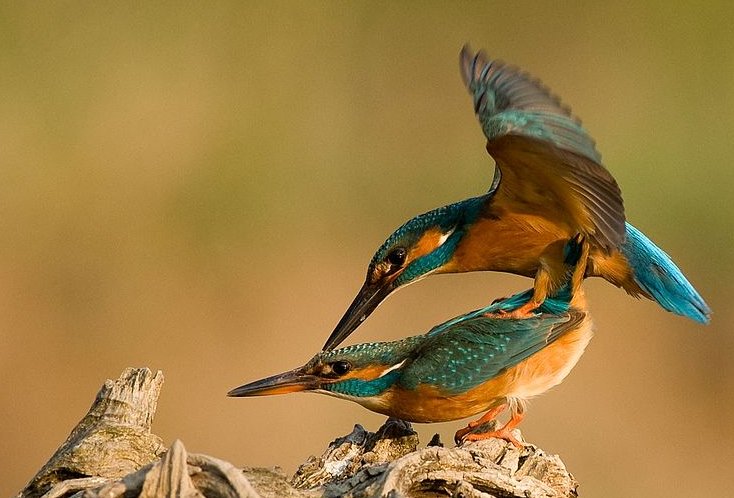
 |
 |
 |
 |
 |
 |
 |
|
Ba9-8 (354 - 6) |
Ba9-9 |
Ba9-10 (350) |
Ba9-11 |
Ba9-12 |
Ba9-13 → 273 |
(273 + 81) |
|
e tara tuu |
o to vaha - o te marama - ko te marama |
kua haga ia i te ika |
e kua rere ko te manu |
ki te huaaga |
o to kava - kua huri ko to hatu |
kua tupu ko to toa |
|
Tara.
1. Thorn: tara miro. 2. Spur:
tara moa. 3. Corner; te tara o te
hare, corner of house; tara o te ahu,
corner of ahu. Vanaga. (1.
Dollar; moni tara, id.) 2. Thorn,
spike, horn; taratara, prickly,
rough, full of rocks. P Pau.: taratara,
a ray, a beam; tare, a spine, a
thorn. Mgv.: tara, spine, thorn,
horn, crest, fishbone. Mq.: taá,
spine, needle, thorn, sharp point, dart,
harpoon; taa, the corner of a house,
angle. Ta.: tara, spine, horn, spur,
the corner of a house, angle. Sa.: tala,
the round end of a house. Ma.: tara,
the side wall of a house. 3. To announce, to
proclaim, to promulgate, to call, to
slander; tatara, to make a genealogy.
P Pau.: fakatara, to enjoin. Mq.:
taá, to cry, to call. 4. Mgv.: tara,
a species of banana. Mq.: taa, a
plant, a bird. Ma.: tara, a bird. 5.
Ta.: tara, enchantment. Ma.: tara,
an incantation. 6. Ta.: tara, to
untie. Sa.: tala, id. Ha.: kala,
id. Churchill. Kava.
1. Sour; salty: vai kava, saltwater,
sea; te kava o te haíga, acrid
underarm smell; tagata kava - tagata
kakara i te kava, man with smelly
armpits. 2. He-kava te haha, to be
thirsty. 3. To turn sour, to become
embittered, bad-tempered, exasperated (used
with manava): tagata manava kava,
bad-tempered, angry man. Vanaga. Bitter,
salt; vai kava, brackish water;
hakakava, to embalm; kavakava,
acid, sharp, bitter, salt, spiritous,
vinegar, poisonous, disagreeable;
akavakava, to make sharp;
hakakavakava, to make acid. P Pau.:
kava, disagreeable to the taste;
kavakava, acid, sharp. Mgv.: kava,
to be bitter, sour, acid, salt. Mq.: kava,
bitter. Ta.: ava, bitter, acid, salt.
Kavahia: 1. Comfort, comfortable, to
feast; hakakavahia, comfort,
comfortable. 2. Repulsive (of food),
disgusted; hakakavahia, repulsion.
Kavakava, rib; moi kavakava, a
house god G. P Mgv.: vakavaka, the
breast. Mq.: vakavaka, vaávaá,
rib. Ma.: wakawaka, parallel ridges.
We shall need all the available material in
order to determine the germ sense of this
word. Sa.: va'ava'a, the breast-bone
of a bird; fa'ava'a, the frame as of
a slate. To.: vakavaka, the side.
Fu.: vakavaka, the side below the
armpit. Ha.: hoowaa, to make furrows.
In all these we may see the idea of ridge or
depression, or of both, as primal (Rapanui,
Samoa, Marquesas, Maori, Hawaii), and as
secondary the part of the body where such
appearances is common (Mangareva, Tonga,
Futuna). Churchill. Mgv.: kava, the
pepper plant and the drink made therefrom.
Ta.: ava, id. Mq.: kava, id.
Sa.: 'ava, id. Ma.: kawa, a
pepper. Kavakava, a fish. Sa.:
'ava'ava, id. Kavapui, a tree.
Ta.: avapuhi, a fragrant plant. Mq.:
kavapui, wild ginger. Sa.: 'avapui,
id. Ha.: awapuhi, id. Churchill. Mq.:
ava, a small fish of sweet water.
Sa.. 'ava'ava, a small fish. Ha.:
awa, a fish. Kakava, burnt. Sa.:
'a'ava, very hot. Churchill. |
|
INVISIBLY
CLOSE TO THE SUN: |
|
MENKHIB (Next to the Pleiades =
ζ
Persei
(57.6)
PORRIMA (γ Virginis) |
ZAURAK (Boat) = γ Eridani
(58.9) |
λ Tauri (59.3), ν Tauri (59.9) |
4h (60.9)
JĪSHUĬ = λ Persei (60.7)
COR
CAROLI (α Canum Ven.) |
υ Persei (61.2) |
BEID (Egg) =
ο¹
Eridani
(62.2),
μ
Persei (62.8)
VINDEMIATRIX ( ε Virginis) |
Al Dabarān-2 (The Follower)
HYADUM I =
γ
Tauri (63.4)
*22.0 = *63.4 - *41.4 |
|
May 17 |
18 |
19 |
20 |
21 |
22 (142) |
23 |
|
"April 6 |
7 |
8 |
9 |
10 |
11
(101) |
12 |
|
3-14 |
MARCH 15 |
16 |
17 |
18 |
19 (78) |
3-20 |
|
... Ecclesiastically,
the equinox is reckoned to be on 21 March (even though
the equinox occurs, astronomically speaking, on 20 March
[*364] in most years) ... |

The
head looking back in glyph 348 (= 12
* 29 as in the number of glyphs on side b of the C text)
probably means 'no
future ahead', i.e. the end station (terminalia).
When once upon a time the
Sun reached MARCH 14 it ought to have indicated a
door of exit
(3-14 → π)
 
for the
winter season. This was at 'the star next to the Pleiades', viz. ζ
Persei at his left foot above the Pleiades:
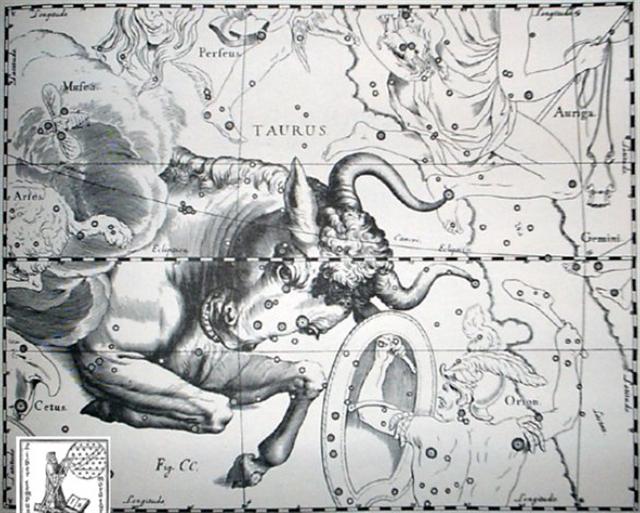
The last
star in Perseus (μ) - at his right
uplifted knee - came 5 days later.
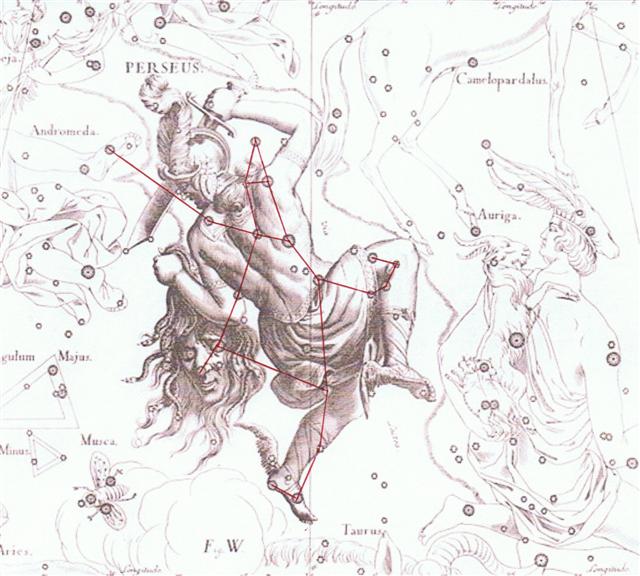
And not far away was
Auriga with the goats, resting across
the Milky Way river and supported by the
right horn (tara) of Taurus.

... A man once said to his careless son: The
world is as sharp as a knife. If you don't watch out, you'll
fall right off. His son replied that the earth was wide and
flat; no one could fall off. And as he kicked at the ground to
show how solid and reliable it was, he ran a splinter into his
foot and died soon after ...
From MARCH 20 at Hyadum I (*63) to
MARCH 31 at Haedus I (*74) there were 11 days. 354 (Ba9-14) + 11
= 365 (Ba9-25):
 |
 |
 |
 |
 |
 |
|
Ba9-15 (355) |
Ba9-16 |
Ba9-17 |
Ba9-18 |
Ba9-19 |
Ba9-20 |
| koia ra ki te
nuku |
e kua tupu i te
tauuru |
e
tagata ui ra |
ki te huaga |
kua rere ko te manu |
ki to toa ko to
toa |
|
MARCH 21 |
22 |
23 |
24 |
25 (84) |
26 |
 |
 |
 |
 |
 |
|
Ba9-21 |
Ba9-22 |
Ba9-23 |
Ba9-24 (364) |
Ba9-25 |
| kua haga ki te marama |
kua tupu te
toa |
ko te manu - kua haga ia ki te
toa |
te
kava ku huri ïa |
ki to
hatu |
|
INVISIBLY
CLOSE TO THE SUN: |
|
MARCH 27 |
28 |
29 (88 = 152 - 64) |
30 |
31 |
|
No
star listed (70) |
TABIT =
π³
Orionis
(71.7),
π²
Orionis (71.9) |
π4
Orionis (72.1), ο¹
Orionis (72.4),
π5
Orionis (72.8)
*31.0 = *72.4 - *41.4 |
π¹
Orionis (73.0),
ο²
Orionis (73.4),
HASSALEH = ι
Aurigae
(73.6),
π6
Orionis (73.9)
*32.0 = *73.4 - *41.4 |
ALMAAZ
= ε Aurigae
(74.7),
HAEDUS
I = ζ Aurigae
(74.8) |
|
VISIBLE CLOSE TO THE
FULL MOON: |
|
ζ
Herculis,
η
Tr. Austr.
(252.1), η Herculis, β Apodis (252.5) |
ATRIA = α Tr. Austr.
(253.9) |
Tail-6 (Tiger)
WEI (Tail) = ε Scorpii,
η Arae (254.3),
DENEBAKRAB = μ Scorpii
(254.7) |
ι Ophiuchi (255.3), GRAFIAS
= ζ Scorpii (255.4)
*214.0 = *255.4 - *41.4 |
κ
Ophiuchi (256.2), ζ Arae (256.5), ε Arae (256.8),
CUJAM (Club) = ε Herculi
(256.9) |
|
Nov 28 |
29 |
30 |
Dec 1 |
2 (336 = 7 * 48) |
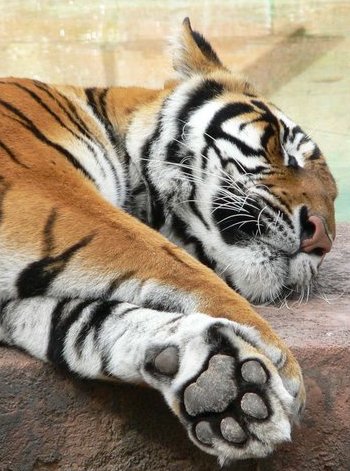
|





















